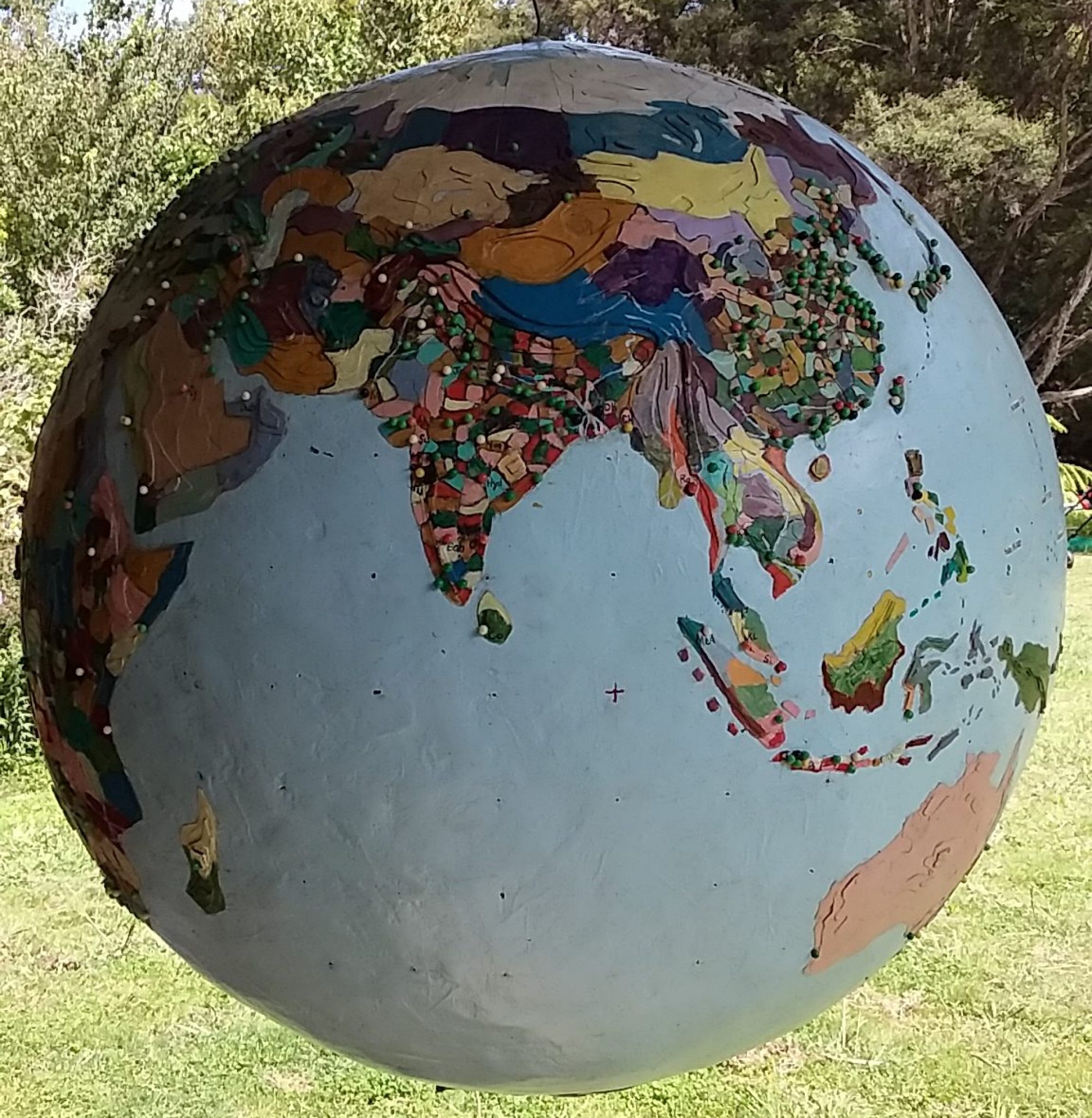Sana’a
Millisphere (abstract noun): a region where approximately one thousandth of world’s population live.
Based on tribal geographies going back to biblical times, Yemen (population 29 million) could be divided into three or four millispheres. It’s population is mostly Arabic and can be divided roughly 60 – 40 between Sunni and Shi’a Muslims.
Yemen is the third highest in the world, after Serbia, for civilian firearm ownership. America, naturally, comes first. The International Red Cross calls Yemen the worst humanitarian crisis that the world presently faces and estimates that seven million Yemenis are starving and about one million have cholera.
The latest civil war in Yemen started when fundamentalist Sunni Yemenis, returning from Saudi Arabia, established Wahhabi mosques in Sana’a and preached against Zaydism (the local form of Shi’a Islam). The inevitable backlash came from the Zaydi Houthi tribal areas in the mountainous north of Yemen, and in 2015 the Houthis overran Sana’a.
The Republic of Yemen government fled south to Aden on the Arabian Sea coast and Yemen – last united in 1990 – returned to being two countries. The Republic holds South Yemen (population eight million) which is larger in area than North Yemen (population twenty-one million) but much of it is desert.
Back during the Cold War, the Soviet Union supported South Yemen and the Americans backed North Yemen. Now the situation has reversed and there are US special forces in the south supporting the Republic of Yemen in exile and coordinating the war against the Houthis, who are supported by Iran.
Osama bin Laden was a Sunni Saudi of Yemeni descent, and a Wahhabi, and al Qaeda in the Yemen also supports the Republic of Yemen. The country’s late president Ali Abdullah Saleh once said: “Governing Yemen is like dancing on the heads of snakes.”
North Yemen, currently held by the Houthis, can be further divided along altitude lines – between the Red Sea coast where food is imported and the highlands where the capital Sana’a sits. Yemen does not grow enough food to feed itself and the Saudis have destroyed the Red Sea port infrastructure, blockading food imports. Yemen could possibly grow enough if they grew lentils instead of khat, the narcotic leaves of which are chewed as a stimulant.
Since the 1960s, US arms manufacturers have lobbied their government representatives about capitalising on the conflicts in the Middle East – it would be better for American businesses if these wars were fought with US arms, not those made by other members of the P5 (France, Britain, Russia and China) they reasoned.
In 2009 Saudi Arabia started fighting Yemen’s Houthis with arms supplied by the Obama administration. Saudi Arabia is reluctant to put soldiers into Yemen and has conducted a “smart war” from the air. Drones and jet fighters with “dumb bombs with graduate degree guidance systems” were deployed by Riyadh – with American technical assistance – and Yemen descended into an Islamic blood feud, half the casualties of which were civilian.
After selling the Saudis $100 billion worth of the latest in American weapons systems, and after the Saudis had killed the neutral mayor of Sana’a in 2016, with a guided missile at a funeral, the Obama administration started raising concerns about civilian casualties with the Saudis. Barack Obama’s signing of the “nuclear non-proliferation” treaty with Iran further angered the Saudis.
Incoming US president, Donald Trump, “decoupled humanitarian from security concerns,” in Yemen and last year he signed a deal for another $US 110 billion dollars of arms sales to Saudi Arabia. He said the deal represented “hundreds of billions of dollars of investment in the US and jobs, jobs, jobs.”
Trump’s simple policy in the Middle East is to set Sunni and Shi’a Muslims against one another and then sell arms to create US jobs and pay for US oil imports.
“Aspirant millisphere” South Yemen also has a secessionist movement but this is being put down by the Republic of Yemen and their US allies. Peace would be bad for the American economy.
In 2010 when The River City Press editor, Doug Davidson and his wife Marion visited Yemen the Houthis had yet to reach Sana’a. At night the stained glass windows of Sana’a’s UNESCO World Heritage old town looked “like something out of The Arabian Nights,” Marion said.
Sana’a is one of the oldest continuously inhabited cities in the world – going back some 2500 years and reputedly has the world’s oldest mosque. Since 2015 some of its distinctive inner city, rammed-earth, multi storey houses have been hit by American “smart” bombs – fired by the Saudis.
Between the Americans and the Wahhabis many important historic sites are being destroyed in the Middle East.
Fred’s millisphere columns can be accessed at millisphere.blogtown.co.nz
